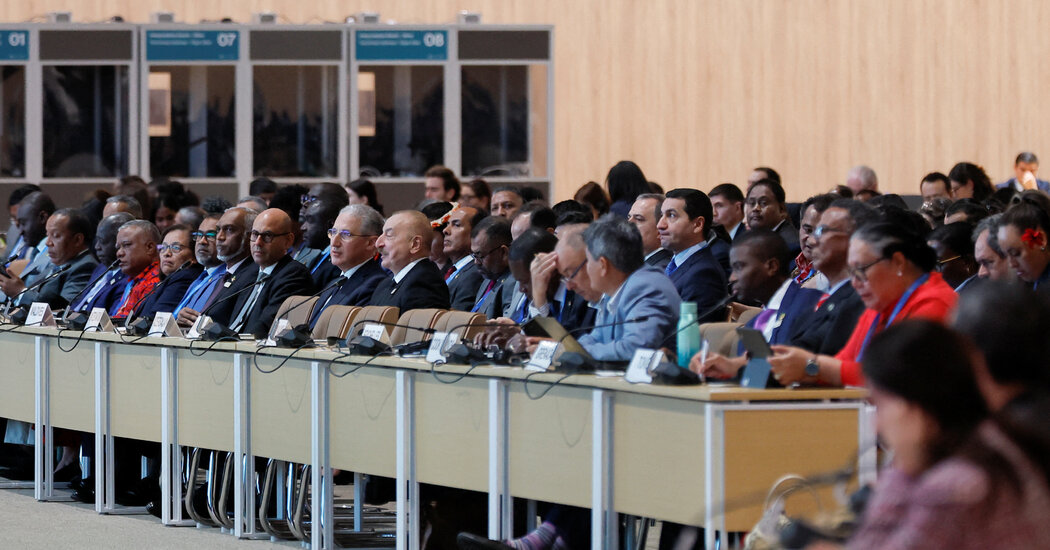Negotiators agree that trillions are needed to help lower-income countries adapt and cope, but not on who should pay.
The language of world leaders speaking on Tuesday at the United Nations climate summit was diplomatic, but the underlying message was clear: There’s friction over the big issue at the conference.
The negotiations are focused on delivering a new plan to provide developing countries with funds to adapt to a warming world. Ali Mohamed, Kenya’s climate envoy, said there was widespread agreement that cutting emissions and making countries more resilient to storms, floods and heat would require “trillions” of dollars.
But just days into the talks, there were pointed comments from the leaders and squabbling in the negotiating rooms about the details, including exactly how much money should be raised, who should pay, where it should come from and how it should be spent.
“How? Where? By whom?” said Mr. Mohamed, the lead negotiator for the African group of countries. “That’s the discussion that’s currently underway.”
The financing goal is meant to replace an annual target of $100 billion that was set in 2009 and finally met two years late, in 2022.
“For decades, wealthy nations pledged $100 billion annually to support vulnerable countries,” said Prime Minister Gaston Browne of Antigua and Barbuda. “Yet these promises have largely gone unfulfilled.”
